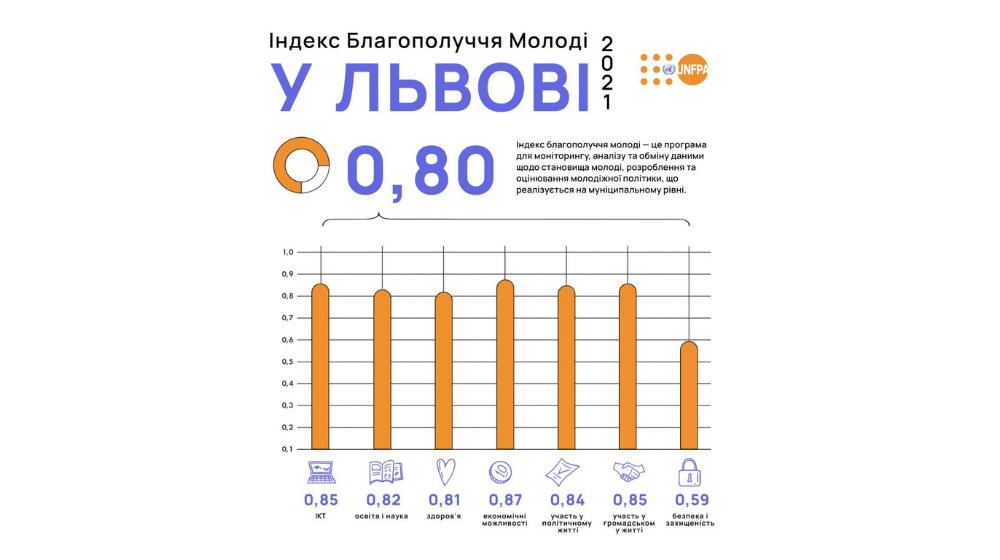The Youth Well-Being Index was presented in Lviv to comprehensively assess the level of well-being of young people in the city. The presentation was joined by Jaime Nadal, UNFPA Representative in Ukraine, Andrii Moskalenko, First Deputy Mayor of Lviv, Liudmyla Shevtsova, UNFPA Youth and HIV Programme Adviser in Ukraine, Oleh Malets, Director of the WORKS! Network of Youth Spaces, Tetiana Prykhodko, pollster, and representatives of SoftServe, a socially responsible business.
A similar poll was conducted in 2019 when the index was 0.71 out of a possible 1 (one). This year, the index reached 0.80.
UNFPA and the Institute of Demography and Social Research of the National Academy of Sciences of Ukraine constantly conduct such opinion polls to improve the quality of life of young people in the cities of Ukraine. A total of 3485 respondents have already taken part in the polls. This time, 500 people were polled in Lviv.
The results allow comparing the indicators of 2019 and 2021 by seven sub-indices:
- Education and science: 0.76/0.82
- Healthcare: 0.72/0.81
- Economic opportunities: 0.66/0.87
- Participation in political life: 0.54/0.84
- Participation in public life: 0.72/0.85
- Information and communication technologies: 0.97/0.85
- Security and safety: 0.56/0.59
“Why did the index rise after almost 2 years of the pandemic? In fact, there is no simple answer; we need to consult with the competent institutions responsible for specific sub-indices. However, we can say one thing: Lviv does not stand still and is becoming a comfortable place for young people, regardless of the challenges that might arise. The Children and Youth Friendly Lviv strategy has been in place and a large number of initiatives have been implemented for a few years now, so, logically, we are now seeing their results, their effects in various areas. The decrease in the value of the Information and Communication Technologies sub-index is also indicative here, as this is the only sub-index that has decreased. It is logical that with the significant transition to digital, young people have been forced to almost completely change their communication experience, and their demand for quality services has increased drastically. At the same time, this demand overwhelmed the services and service providers, which affected the indicator. In general, the dynamics are positive, and there is room to grow,” says Oleh Malets, Head of the WORKS! Network of Youth Spaces.


